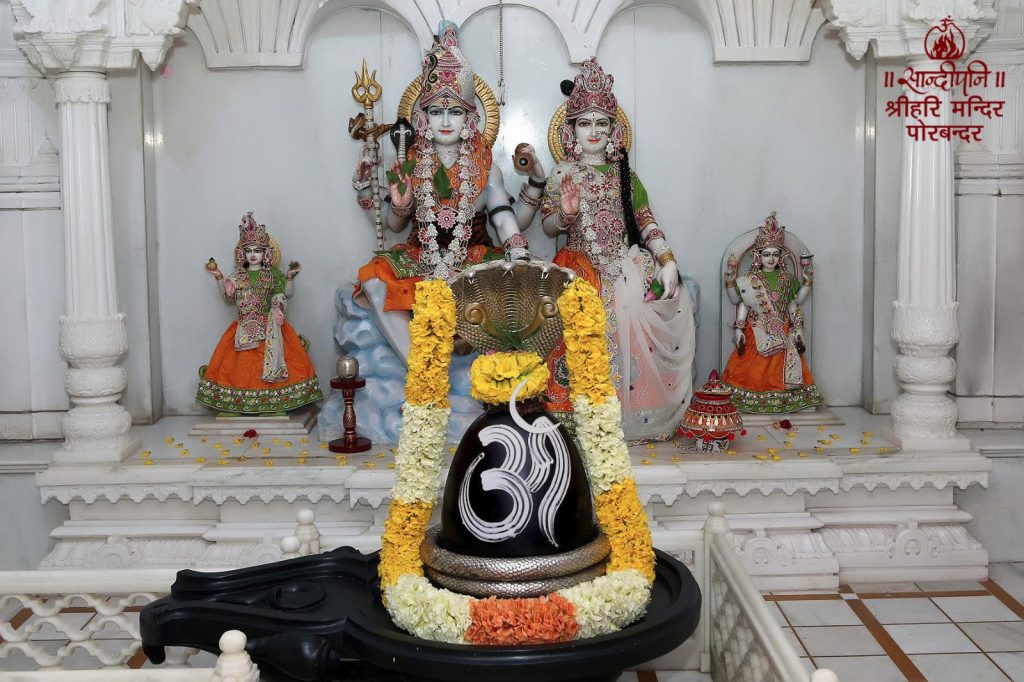Lord Krishna is ‘Yogeshwar’ and Lord Shiva is ‘Yogishwar’. Yoga has eight components: Yam, Niyam, Aasan, Pranayam, Pratyahar, Dharana, Dhyan and Samadhi.
A temple dedicated to Lord Shiva depicts all eight components. One enters the temple by ascending the five steps each of Yam and Niyam. The murti of Nandi is seen first. Nandi symbolises the Aasan, which is, to be firmly seated in one place and posture. Nandi gazes up at the murti of Lord Shiv. In emulation, the votary should be perfectly still in an Aasan. Nandi also symbolises Dharma (Religion), underlining the fact that the goal of religion should be Shiv, meaning, salvation.
The Aasan helps keep the body still. Now, to keep the mind still one must practise Pranayam. Practising Pranayam steadies the mind. There is also a murti of Hanumanji in the Shivalay. This symbolises that our mind is like a monkey and we need to harness it through Yogic breathing.
Once the mind is still, we have to withdraw our senses, which are forever craving for objects of pleasure in the external world and direct them inwards. This process of withdrawing senses from the temporal world is known as Pratyahar, signified by the the tortoise placed ahead of Nandi. Just as a tortoise withdraws all its limbs within its shell, we would also withdraw our senses from objects of sensual pleasure. Now, with disciplined mind and conquered senses, one should contemplate upon God. One does this by Dharana. Lord Ganesh epitomizes Dharana. One must learn Dharana from Him.
This constant focus of the mind and senses upon God is known as Dhyan. Goddess Parvati symbolizes uninterrupted attention to God. Water continuously drips upon the Shiva Linga and it flows only to the North like the holy river Ganga at Varanasi, which has auspicious significance. It is also related to the awakening of the Kundalini and the focussed upward movement of all our energies.
In Dhyan, the mendicant and the object are two separate entities. The submergence of these two entities into a homogenous whole is known as Samadhi. Samadhi is the zenith of Yoga. The Shiva Linga indicates that the soul immersed in Samadhi becomes one with his deity.
Hence, the various deities in a Shiva temple demonstrate the eight stages of the Ashtanga Yoga of Lord Shiva, the Yogishwar.
